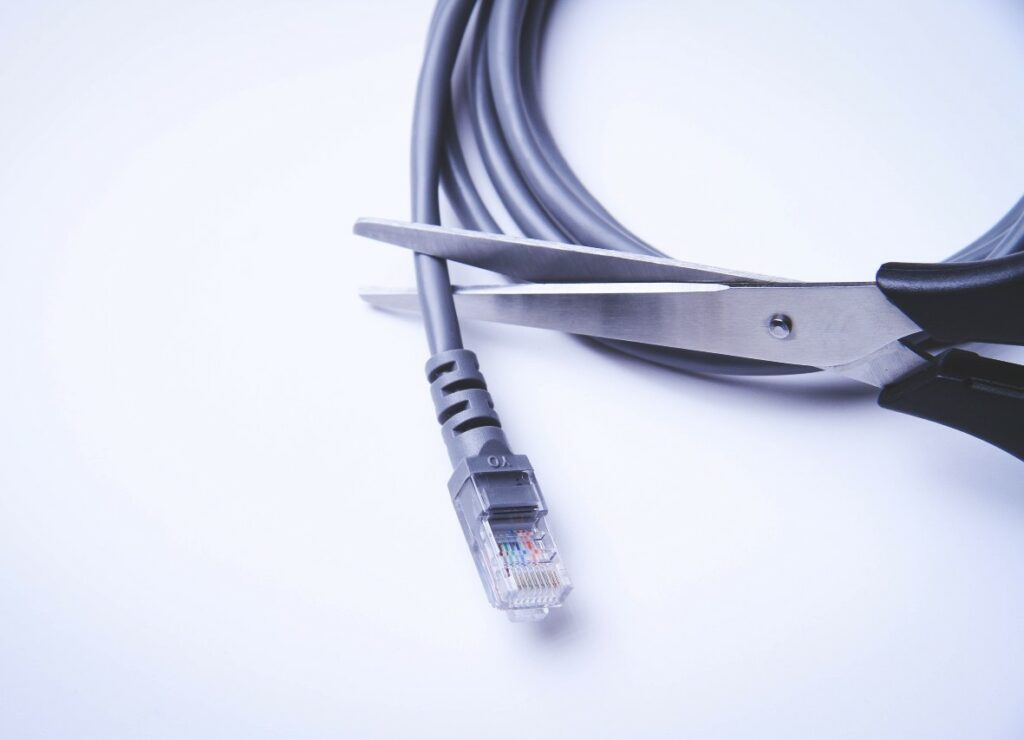This post originally appeared at https://www.badgerinstitute.org/lawmakers-halt-evers-broadband-binge/
When Republicans removed $750 million for broadband expansion from Gov. Tony Evers’ proposed budget last week, Wisconsin news outlets complained that for the first time in a decade miserly conservatives weren’t putting up a penny of state taxpayer money for new internet infrastructure.

Rep. Alex Dallman, R-Green Lake, a member of the Joint Committee on Finance that did the budget cutting suggested to one state news outlet that there was another side of the story. Wisconsin and the other 49 states are positively swimming in broadband funding, all of it the result of the Biden administration spending bacchanal.
“Drowning” might be a better word. In December, long before Evers proposed by far the largest-ever state expenditure for broadband, the Badger Institute pointed out the Public Service Commission had no idea how to spend the federal money the Evers Administration designated for the Public Service Commission to oversee.
A Legislative Audit Bureau report and a brutal Joint Legislative Audit Committee hearing in March reinforced that the commission had little idea that most of the 83 broadband projects representing $100 million had not been launched and that the agency couldn’t account for those that had been started.
As we have reported, the so-called COVID-19 emergency spending bills, the CARES Act and the American Rescue Plan Act, have pumped $175 million into the state’s broadband program over the past three years. In the four years from 2014-17 the total was less than $4 million, according to commission data.
And there is more coming, a lot more. While we aren’t expected to know until at least the end of this month, estimates of between $700 million and $1.1 billion — $350 million more than the Evers ask — will be coming by way of the Infrastructure Investment and Jobs Act, President Biden’s pet spending bill, signed in November 2021.
According to the current estimate, the commission says Wisconsin’s broadband network could be completed for $1.8 billion. The current progress in the state and the track record of federal involvement in broadband across the country would suggest that many billions more will be spent and many billions more will be wasted with no guarantee the job will get done.
The Federal Communications Commission in 2011 estimated that 19 million people or seven million homes did not have modern broadband access. After a decade and $50 billion in federal stimulus, Biden asked Congress for $100 billion for broadband in his Infrastructure bill because he said there were now 30 million people without the service.
Congress “compromised” and gave him $65 billion. The president promptly set aside $42.5 billion for rural areas and called it the Broadband Equity Access and Deployment program.
The word “equity” is used dozens of times all over the program’s website, but despite a thorough search of program documents and presidential press releases, no definition within the context of internet access can be found.
What you can find are requirements that give the edge in getting federal broadband projects to co-ops and nonprofits over experienced broadband companies; preferential treatment for union labor; mandatory climate change assessments; and the insistence from the President himself that all materials used in all projects be made in America.
“The problem,” the left-leaning Brookings Institution pointed out, is that the country can close the rural digital divide in the next few years, or it can enforce a strict Buy American mandate. It cannot do both—requiring the administration to decide which principle it wants to prioritize over the other.”
Mike O’Reilly, former commissioner of the FCC, told a Federalist Society panel audience earlier in the year that the ideological and regulatory baggage alone would cause 30% or nearly $13 billion of the Broadband Equity budget to be wasted.
Then again, accountability has never been a strong suit for government broadband programs. In May 2022, the federal Government Accountability Office said it was difficult to know how effective or efficient broadband programs were because there were more than 100 of them embedded in 15 federal agencies.
The latest funding guide alone is 266 pages.
The report said the diffusion of programs encouraged overlap and duplication of services and support. There was, the agency said, a “lack of a coherent national broadband strategy with clear goals, plans, and performance measures.”
The GAO followed up with a report critical of the government’s lack of fraud protection in its broadband programs.
While the report didn’t specify fraud in the expansion programs, the FCC found plenty of it in a $14 billion internet access subsidy plan called the Affordable Connectivity Program.
In a sample review, the FCC found thousands of households among more than four million low-income households cheating to add thousands of ineligible people to multiply the subscription subsidies.
Perhaps it isn’t surprising that large telecom companies that benefit from government supported subscriptions — fraudulent or not — are urging Congress to extend the Affordable Connectivity Program without serious reforms.
Efforts to rein in the waste, fraud and abuse have been tepid at best. Buried in a 2019 broadband plan was $1.2 billion set aside to double the number of FCC audits of broadband projects to sniff out waste. More than two years later, funding for the audits had not yet been allocated.
Federal and state officials will be ready with the confetti and press releases when they unleash the next Infrastructure Act broadband deluge. It’s good to know, at least in Wisconsin, there are some skeptics on Joint Finance who’d rather we didn’t drown in our own questionably handled tax money.
Mark Lisheron is the Managing Editor of the Badger Institute. Permission to reprint is granted as long as the author and Badger Institute are properly cited.
The post Lawmakers halt Evers’ broadband binge appeared first on Badger Institute.